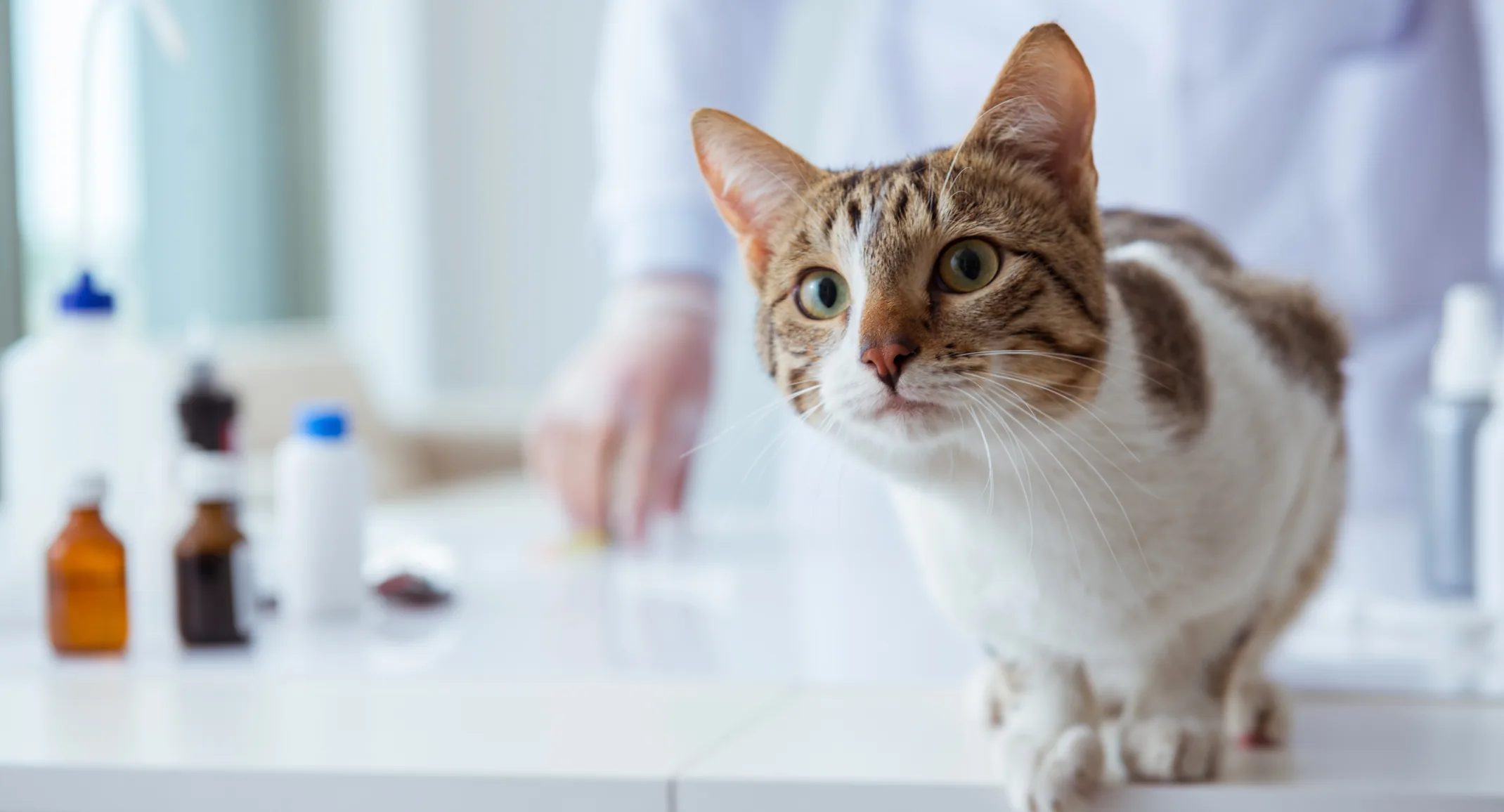How You Can Help Your Pet Have a Fear Free Veterinary Visit
General

It is normal for pets to display signs of fear, anxiety, and stress (FAS) when removing them from familiar environments. Let’s face it, the Veterinary office isn’t their favorite place to visit, but there are tools and tips you can use to help your pet have a fear free experience.
STEP ONE – Signs of Fear, Anxiety and Stress
The first step is learning what is normal behavior for your animal and what is an indicator that they are feeling FAS. Pets are individuals and can show signs of FAS in many different ways. In the pictures below are the beginning signs of FAS: Animals cannot speak to us and tell us when something is wrong. Learning what their body language is communicating is extremely important in building their trust and reducing FAS. Once you begin noticing these changes in your pet’s body language you can start learning their stressors and triggers and figure out ways to avoid them in the future.
STEP TWO – Pre-visit Preparations
Many people believe that veterinary visits start when you walk through the front door of the building, but, in reality, the visit begins at home prior to the appointment. The more prepared you are the better. Leave plenty of time before appointments to avoid being rushed, if you are stressed your pets are too.
Cats in particular may begin to feel FAS with even the sight of their carrier. Prior to their appointment, desensitize them by keeping their carrier in a location where they spend a lot of time for a few days to weeks. You can also try using species specific calming pheromones such as Feliway or Adaptil to help calm your pet. Rub the inside of their carrier or spray directly onto leashes or bandanas for your pet to wear to their appointment. Some pets may not respond to pheromones and may need something a little stronger to relax like a mild sedative. Please call your veterinarian prior to your appointment to discuss different options that would best suit your pet’s needs. Our goal is to make both you and your pet as comfortable as possible.
STEP THREE – Transportation
Not all pets enjoy travelling in the car. In fact, many pets start showing signs of FAS once they first get in the car. Pheromone products can be used 10-15 minutes prior to travel to get full effect and classical music can be played to soothe your pet during the ride. Allow your pet to use the bathroom before getting into the car and after getting out of the car to prevent accidents.
Feeling secure is important for the comfort of your pet during transport. Small dogs and cats should always travel in size appropriate carriers and larger dogs should be restrained when possible. It is always best to have each pet in his own carrier with a maximum of two pets in one carrier if necessary.
If the only time your pet gets in the car is to travel to the vet, they may exert signs of FAS just by getting in the car. Try taking small trips with your pet to other locations or simply just around the block to try and get them more comfortable in the car. Remember to give lots of positive reinforcement throughout so your pet can stop associating your car with a negative experience.
STEP FOUR – Arrival
Pets often get anxious once arriving at the veterinary clinic. If you know your pet gets more anxious in the lobby, try waiting in your car or taking your pet outside for a walk until your appointment. Remember, all pets should arrive on a leash or in a carrier for their own safety and well-being.
When medically appropriate, it is important to bring your pets hungry so food can be used as a distraction and reward throughout their visit. If your pet is particular about treats or has certain allergies, make sure to bring his favorites from home. Favorite toys and brushes can also be a good tool in comforting pets while waiting for their appointment.
Try to avoid seating dogs and cats next to each other when possible. We have a specific area in the lobby designated just for cats so they can wait quietly without any disturbance. Ask one of our customer care team members for a pheromone towel to cover their carrier while waiting.
STEP FIVE – The Appointment
The appointment can be very intimidating for your pet as they will be handled by multiple people in an unfamiliar place. If you know your pet has certain triggers like their temperature being taken or when they get their ears checked, please alert staff before the exam begins so we can best prepare and avoid FAS when possible.
Some pets are more stressed with you in the exam room. If we feel your pet will do better without you, we may ask to bring them to the treatment room to collect samples with your approval. Cats should be given the time and space to freely come out of their carrier prior to handling. Cat carriers with two openings and those that can easily be taken apart are recommended for veterinary visits.
STEP SIX – Returning Home
Give your pet time to readjust and reacclimate once back home. If your pet was sedated during their appointment, they may have noise sensitivity and exhibit unpredictable behavior. They should be allowed to recover in an isolated, safe and quiet room until the effects of the medication have worn off.
If you have another pet at home, you should consider their FAS as well when re-introducing pets. Unfamiliar scents of other pets and people, separation anxiety, and stress from the visit can trigger aggression between familiar pets. Tips for re-introduction include giving pets space when arriving back home by separating them, removing high value toys and treats from the area to avoid competition, allowing pets to meet in neutral territory, or taking them for a walk to distract them.
If you have any questions about reducing fear, anxiety, and stress in your pet, please give us a call today at 337-984-7611.
Written by Rachel Young, Certified Fear Free Professional

